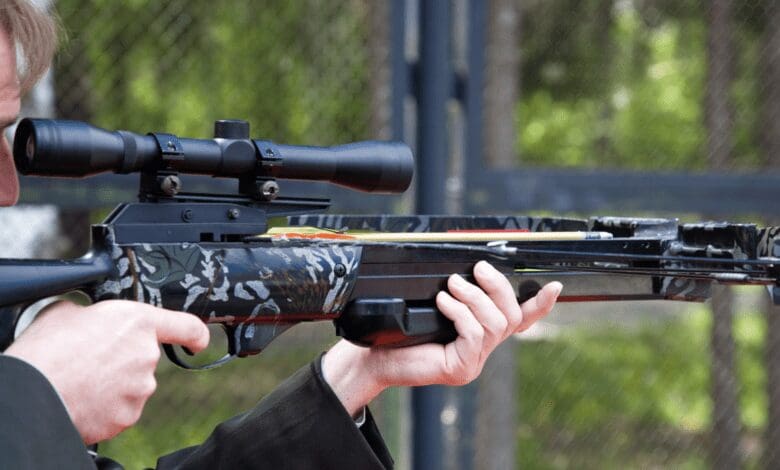How To Choose A Crossbow Scope? 4 Expert Advice

A crossbow scope is a type of optical sight specifically designed for a crossbow. Unlike a traditional rifle scope, a crossbow scope features an elongated design that compensates for the relatively short distance between the bow and the target.
In addition, crossbow scopes typically have lower magnification levels than rifle scopes, as this allows for a wider field of view at shorter distances. While some hunters prefer to use open sights when hunting with a crossbow, a scope can help to improve accuracy by providing a clear and precise aiming point.
Tips To Choose a Crossbow Scope
This article will cover some of the most crucial things to keep in mind while selecting a crossbow sight. And by the end of the article, you will better understand what type of scope will work best for you and your hunting needs, so let’s start.
Magnification
Magnification is one of the most important features to look for in a crossbow scope. The magnification determines how far you can see your target. The range of most scopes is between 4 and 16 times. Thus, the object will appear 4 to 16 times larger than it would be without the scope.
If you are planning on hunting a game far away, you will want to choose a scope with a higher magnification. However, if you plan on hunting a closer game, you will want to choose a scope with a lower magnification.
Reticle Type
The reticle type of a crossbow scope is a crucial component to consider. The reticle is the crosshair or aiming point in the middle of the scope.
There are three main types of reticles.
- Duplex – A duplex reticle is a crossbow scope with a Dual-X crosshair design. This crosshair design consists of two main horizontal reticles that intersect in the center of the scope.
The top and bottom halves of the reticle are then subdivided into smaller units of measurement. This results in a scope that is highly accurate and easy to use.
The duplex reticle is one of the most popular types of crossbow scopes on the market, and it is an excellent choice for both novice and experienced shooters alike.
- Non-illuminated – Non-Illuminated Reticle is a crossbow scope with no illuminated center dot or other feature. This type of reticle is typically used in low-light situations or when shooting at long-range targets.
The main advantage of a non-illuminated reticle is that it does not reflect light, making it easier to see in low-light conditions. In addition, a non-illuminated reticle is often less expensive than an illuminated reticle.
- Illuminated – An illuminated reticle is a crossbow scope that uses a lighted aiming point. This is generally a red or green dot, but it can also be a crosshair or other pattern.
The advantage of an illuminated reticle is that it is easier to see in low-light conditions, such as at dawn or dusk. It can also be useful in bright conditions where the dot may be difficult to see against a sunny background.
However, an illuminated reticle will require batteries, so it is important to consider this when choosing a crossbow scope.
Mounting Position
The mounting position is where the scope is attached to the bow. There are two main types of mounting positions: top mount and side mount.
Top mount scopes are attached to the top of the bow, while side mount scopes are attached to the side of the bow. Most hunters prefer top-mount scopes because they offer a clear line of sight and do not obstruct your view of the target.
However, side mount scopes can be helpful for hunters who wear glasses because they do not obstruct your view of the target like top mount scopes can.
Durability
One important factor is the durability of the reticle. The reticle is the crosshair that you use to aim the crossbow. It is exposed to a lot of vibration and shock when the crossbow is fired, so it needs to be tough enough to withstand those forces.
Select a scope with a reticle made of a durable substance, such as steel or titanium. Also, make sure that the reticle is securely mounted in the scope so that it does not become loose over time.
With a durable reticle, you can be confident that your scope will perform well for many years to come.
Having said that, we recommend you check the best 2022 scopes.
Conclusion
When selecting a crossbow sight, there are several things to consider, such as the magnification, reticle type, and mounting position.
With the above-mentioned tips in your mind, you should be able to select a crossbow scope that is perfect for your needs. Finding the ideal fit won’t be difficult if you have a little patience and do your homework.
